Succulents love the great outdoors because of the abundance of sunlight. Unfortunately, not all gardens are blessed with bright sunshine and instead, are covered by shadows and shade. If you can relate to this inconvenience, don’t worry because there are succulents that grow and even thrive under low-light conditions.
Among the popular choices for plants are succulents for a number of reasons. Succulent plants are beautifully unique and are available in various colors, sizes, shapes, and textures. Likewise, succulents are durable and many species are tolerant of drought and frost conditions.
In fact, succulent plants grow better when given little water. The rule in watering succulents is to drench their soil only when it has gone completely dry. Otherwise, its roots will rot.
Sunlight is another story.
Best Outdoor Succulents For Low-Light
Succulents need sunlight to produce food and to attain their full colors. When it comes to lighting, the rule is to make sure that succulents receive 4 to 6 hours of sunlight every day.
However, not all areas in the garden receive enough sunlight. Some gardens have mostly sections that are covered by shade or aren’t situated in a location that brings in the sun’s rays.
If we just described your garden, here’s a list of the best low-light succulents that you can successfully grow in your outdoor garden.
1. Rhipsalis Baccifera
Rhipsalis baccifera is a trailing succulent that’s identified by its slender, pencil-shaped, and green-colored stems. Also known as ‘Mistletoe Cactus’, this succulent is popularly grown in hanging baskets where its stems can freely fall off the edges and create a beautiful illusion of a cascading green waterfall.
In the spring or summertime, Mistletoe Cactus will bloom delicate flowers that will range in color from cream white to pink and produce berry-like fruits. Rhipsalis baccifera grows best when given indirect light.
2. Haworthia Concolor
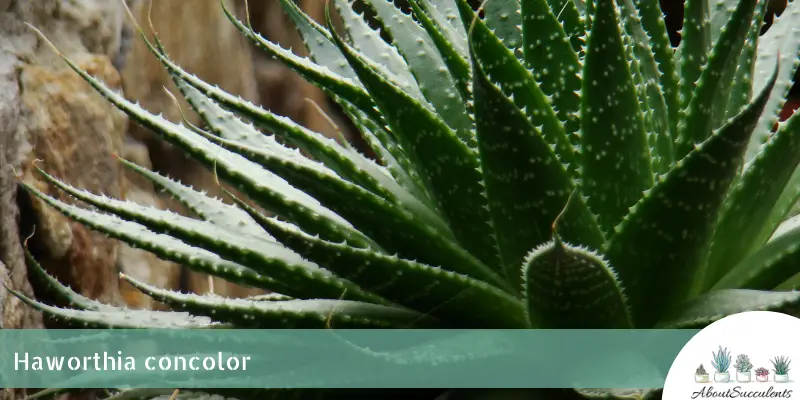
Haworthia concolor or Concolor Zebra Plant is beloved for its fascinating thick, lime green-colored leaves that have a pointed shape and are accented by white dots also known as ‘tubercules’.
Concolor Zebra Plant only grows to a height of 6 inches (15 cm) and is a welcome addition to a rock garden or as an ornament in your outdoor patio. In the months of Fall and Spring, you can expect to see Haworthia concolor bloom with charming white flowers.
In addition to its flowers, Haworthia concolor will give you the gift of offsets that sprout from the base of the plant. Gently pull out the offsets and allow them to harden before you replant and add to your collection of Concolor Zebra Plants.
3. Crassula 'Tom Thumb'.
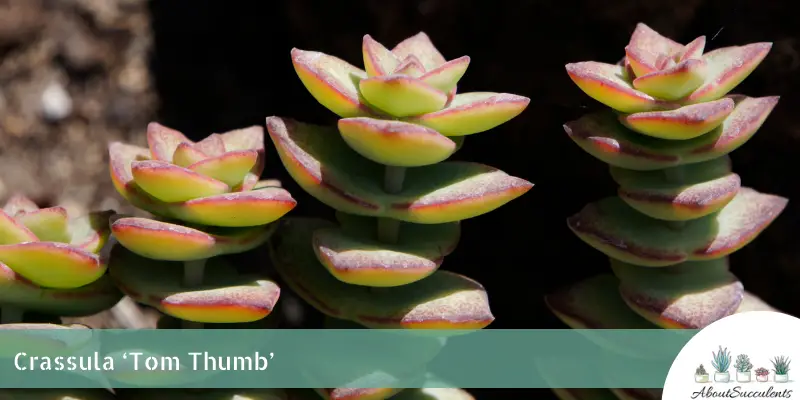
Crassula ‘Tom Thumb’ got its name because it’s a small succulent that doesn’t grow taller than 6 inches (15.24 cm). Horticulturists love Tom Thumb for its small, bright green-colored leaves that have a triangular shape and grow on top of one another as it matures.
Another name for Tom Thumb is ‘Klein Duimpje’ and is also popular with plant hobbyists because it’s a low-maintenance succulent. Similar to other species, it only needs to receive water when the soil is dry.
If your garden has low-light conditions, Tom Thumb will do just fine. What’s important is to make sure the succulent is situated in an area in the garden that gets 6 hours of partial sunlight.
Grow it in a terracotta or unglazed ceramic pot so you can move Crassula indoors if the weather gets frosty.
4. Ceropegia Woodii Variegata
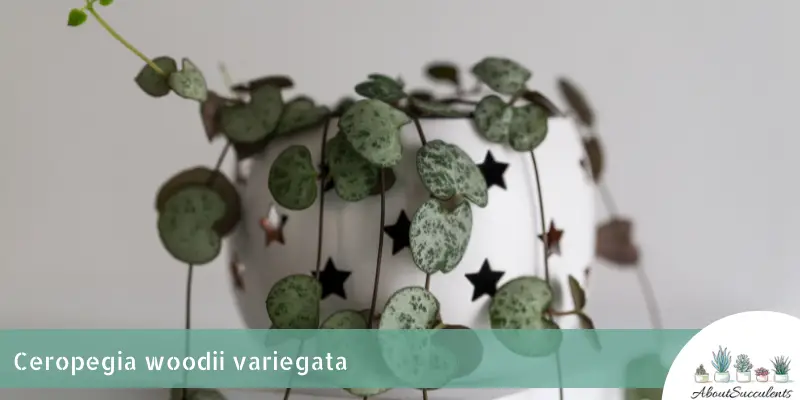
Ceropegia woodii variegata is a fast-growing succulent that’s desired by landscape artists for its trailing green-colored, heart-shaped leaves which are detailed by silver markings. The leaves can trail as far down as 12 inches (30.48 cm).
Sometimes you might come across varieties of Ceropegia woodii variegata that have pink and grey-colored leaves. Among its common names are ‘String of Hearts’, ‘Rosary Plant’, and ‘Chain of Hearts’.
String of Hearts is a very durable succulent plant that can survive drought and humid conditions. It prefers exposure to partial sunlight because its leaves can get burned under the full sun’s rays.
5. Crassula Arborescens Undulatifolia
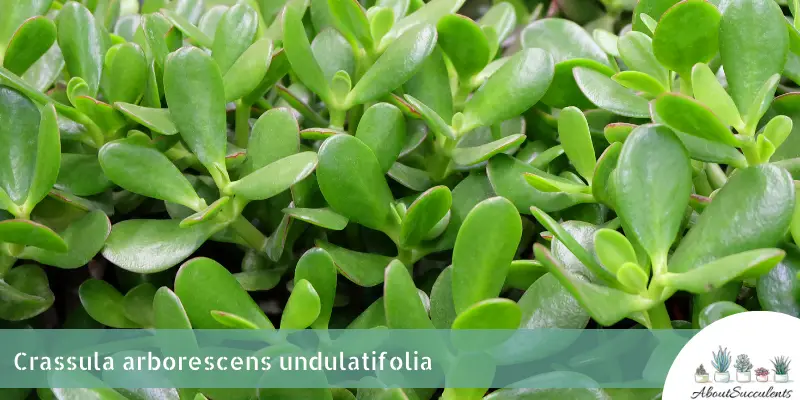
Crassula arborescens undulatifolia or ‘Ripple Jade’ is a compact shrub that can grow to a height of 3 feet (1 m). Its wavy leaves with blue-green color and red-tinged edges give Ripple Jade a peculiar appearance that attracts and delights onlookers.
In the springtime, Crassula arborescens undulatifolia will greet you with small clusters of pink-colored and star-shaped flowers. Against the backdrop of its elegant leaves, Ripple Jade can be the standout feature of your rock garden or water display.
Don’t worry if your garden scarcely receives sunshine. You can plant Ripple Jade in an area that gets up to 6 hours of partial morning sunlight and it will grow properly.
6. Kalanchoe Marnieriana
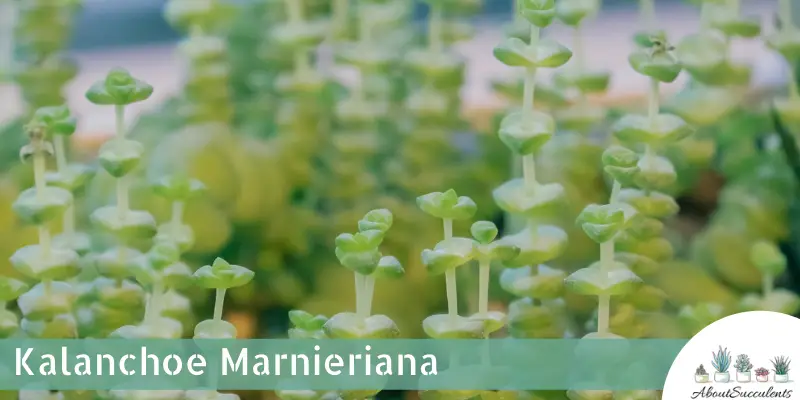
Kalanchoe marnieriana is a succulent that’s made to look magnificent by its paddle-shaped, blue-green-colored leaves with red-tinted margins. The leaves are plump, fleshy, and grow opposite of one another.
If you think Kalanchoe marnieriana is beautiful now, wait until wintertime when flower-bearing stalks grow out of its center. The flowers are small, bell-shaped, grow in clusters, and range in color from pink to red.
You can still help Kalanchoe marnieriana achieve its red-tinted margins under low-light conditions as long as it gets at least 6 hours of partial sun. This succulent which is native to Madagascar is an excellent addition to a Mediterranean-themed outdoor garden.
7. Agave Attenuata
Agave Attenuata gets its nickname ‘Agave Fox Tail’ from its flat, spineless, and pale-green colored leaves that can spread out to 4 feet (121.92 cm) wide.
The leaves of Agave Fox Tail form a flexible rosette that grows out of a thick, wooden stem. Agave attenuata is a good-sized succulent that can grow up to 10 feet (300 cm) and is commonly used by landscape artists as a garden border or as accents to a patio.
Even if grown under low-light conditions, Agave attenuata can still produce hundreds of small, cream-colored, and bell-shaped flowers that bloom in clusters during the late fall, winter, or spring months. These are among the most beautiful flowers that come out of succulent plants.
Conclusion
One of the most relaxing places in your home is the outdoors. People get into landscaping or take up horticulture as a hobby because they want to turn their gardens into works of art that impress guests and provide solace for the family.
Your creativity will only be limited by your imagination because there are hundreds of succulent plants to choose from when it comes to adorning your outdoor garden.
It won’t matter if your garden doesn’t welcome sunshine because there are many varieties of succulents that will grow and thrive even under low-light conditions.
Last Updated on décembre 20, 2022 by Sofia Lara